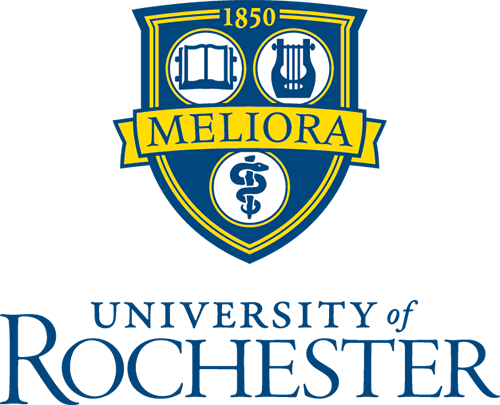
What do a family in France, an art fair in New York City, and a road trip to Buffalo have in common? They’re all part of the story of the Ghent-Bruges Book of Hours, a 500-year-old manuscript jointly acquired by the Memorial Art Gallery (MAG) and River Campus Libraries (RCL) in 2024. We’re peeling back the curtain on how exactly one acquires a medieval manuscript. Spoiler alert: it’s not quick or easy.
Identifying the Manuscript
For years, staff discussed the possibility of a collaborative acquisition between the MAG and RCL, but the right object hadn’t come along yet. That was until Nancy Norwood, MAG’s Curator of European Art, encountered the Ghent-Bruges Book of Hours at an art fair in New York City. She brought the manuscript to the attention of Anna Siebach-Larsen, Director of the Rossell Hope Robbins Library and Koller-Collins Center for English Studies.
“I was able to go through it and it was absolutely beautiful,” Norwood says. “It’s in really pristine condition. Artistically it’s wonderful, the illustrations are extraordinary. All the text was intact. It has very classic imagery, lots of gilding, wonderful border illustrations, and beautiful calligraphy. All the things that make it a work of art.”
Siebach-Larsen adds, “It’s a great example of a really luxurious book of hours from this period.” Books of hours were prayer books widely used in the Middle Ages. They’re associated with women and are proof of their literacy. We often think women in medieval times didn’t have power or know how to read, but that’s not the case. The Ghent-Bruges Book of Hours stands out from the simpler, everyday versions of these prayerbooks in that it was commissioned by a wealthy patron.
Where Did this Book Come From?
Most recently, it belonged to a French family who had the manuscript in their family for generations. According to the medieval manuscript dealer that MAG and RCL worked with, the family did not wish to release their name. Norwood hopes to learn who the family was eventually.
This manuscript was produced in the Netherlands around 1500. Judging by the inscription, in about 1573, it was given as a gift to a tutor and manuscript collector named Garcia de Loaisa Giron. Books of hours were customized based on the individual’s devotional preferences; this one contains mostly male saints and only two female saints. Assessing the ways the book was personalized gives you a glimpse of the owner’s personality.

A Manuscript Meet & Greet
Before a major acquisition, there’s a lot of due diligence that must take place: The team looked into the manuscript’s ownership history to ensure there was nothing dodgy like a theft in its past. Then it was sent to Rochester (heavily insured) so faculty and staff could examine it in person.
Buffalo State University’s Patricia H. and Richard E. Garman Art Conservation Department was the next stop on the manuscript’s journey. Norwood and a fellow staff member carefully packed the manuscript into their car and took a road trip down the 90. If you’re curious–like I was–larger items like paintings are typically transported with a fine arts truck, but smaller ones like this pocket-size prayerbook sometimes hit the road with museum employees.
In Buffalo, the team met with a conservator, who had recently done a project focused on late 16th century Spanish bindings–a perfect fit for this. They assess the item for authenticity and condition. “You don’t want to acquire something that’s been so interfered with [in terms of restorations] that you can’t recover the original intent,” Norwood explains. The conservator went through the manuscript page by page and didn’t see anything concerning. On to the next step!
Making the Case for Acquisition
You might assume a curator can just purchase beautiful and important objects that they think would be excellent additions to the collection. But it’s not that simple.
Any MAG acquisitions (joint or otherwise) over $50,000 must be presented to a MAG Board subcommittee called the Art Committee. They approve acquisitions, loans, and de-accessions. It’s their job to make the best decision possible for the museum. Before bringing it to the committee, curators conduct research in order to advocate for the object. Norwood and Siebach-Larsen worked together to make the case for the Book’s acquisition, researching the history of the manuscript, conducting price comparisons, and more. They went through a similar approval process for the Libraries as well. Norwood also worked with her director to get approval before presenting to the committee. Lucky for Rochester, the Art Committee approved the acquisition.

Arriving Home on University Avenue
All told, the process took about a year. Today, you’ll find the Ghent-Bruges Book of Hours in MAG’s Medieval Gallery. It resides in a climate-controlled case with cool internal lighting that turns off when the museum is closed. Every three months, Norwood turns the pages. The book sits on a custom mount, with two more in the works. Each mount is designed to open precisely a third of the book (the first, middle, and final third) to avoid stressing the spine. Turning the pages and switching between the sections helps keep pressure even. Next to the case, you’ll find an iPad where you can browse a digitized version of the entire manuscript.
The goal is to “[Ensure] that these objects are on display so people can come and look at them, and contextualize it historically and artistically,” Siebach-Larsen says. Access is a top priority, and students and researchers will even be able to handle the manuscript in MAG’s classroom. “Looking on a screen doesn’t give you a sense of size or physical scale. Looking at the physical object completely changes our understanding of how it was made and used,” Siebach-Larsen explains.
Who has access to art, history, knowledge, and stories? It belongs to all of us, but lately, that’s been challenged. According to Siebach-Larsen, “With defunding museums and libraries and the humanities, what we’re saying is that only certain people get to know and see these things.” Thanks to RCL, MAG, and support from donors, these objects are “not just the purview of the rich and the privileged. [They’re] for everybody, no matter where they come from or who they are… There’s nothing I love more than having public school students come see medieval manuscripts,” she adds with a smile.
Whether you’re a high school student, a world-class researcher, or just a person with an interest in beautiful books, you’re welcome to see this incredible object for yourself. And of course, UR (and URMC) students, faculty, and staff, can visit the MAG for free, so go in person and take in the wonders of this tiny prayerbook with its own fantastic world inside.

Find more stories from the University of Rochester Libraries in our newsletter, Tower Talk.


